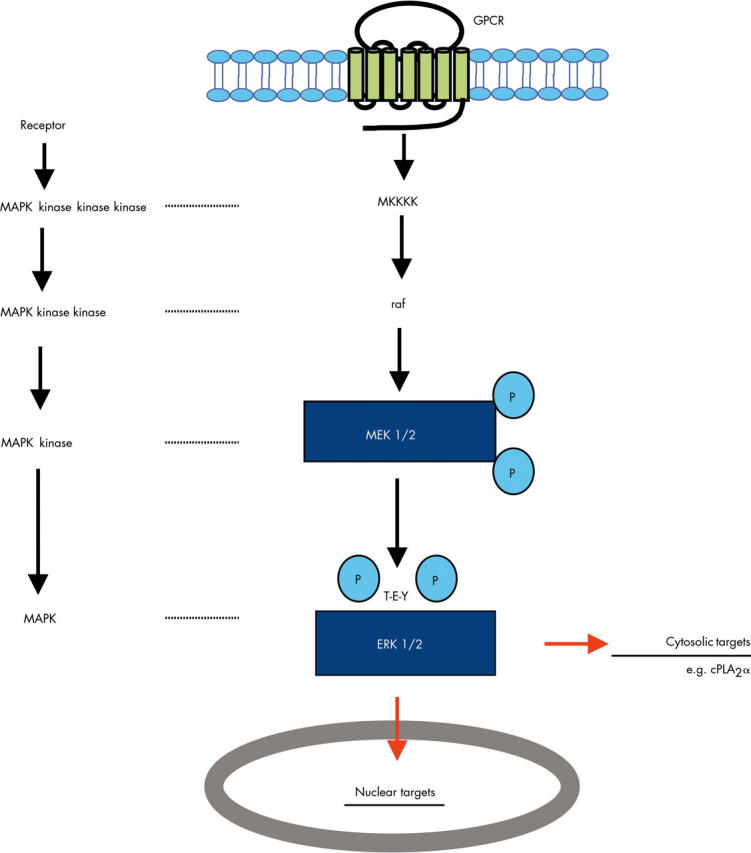Figure 4.

Organisation of MAP kinase cascades. MAP kinase cascades are exemplified by the “classical” MAPK cascade. In this signalling pathway ligand binding to a GPCR triggers activation of the cascade by promoting the generation of second messengers and by recruiting adaptor molecules and non-receptor tyrosine kinases. This results in activation of a MAPK kinase kinase kinase and subsequent phosphorylation and activation of raf, a MAPK kinase kinase. Raf can then phosphorylate the dual specificity kinase MEK (an MAPK kinase) which directly phosphorylates ERK1/2 (a MAPK). Negative feedback then allows for signal dampening or desensitisation. Within the “classical” MAPK cascade ERK1/2 promotes the induction of dual specificity MAPK phosphatases (MKP-1 and-2), thus initiating its own deactivation and limiting cellular responses in the absence of continued stimulus input.19 There is also growing evidence of crosstalk between the different MAPK pathways. For example, it is thought that the proliferative effect of vascular endothelial growth factor on endothelial cells requires the sequential activation of ERK1/2 and JNKs.20 These studies have been strongly influenced by the availability of selective pharmacological tools that block the MAPKs themselves or target upstream components of the various cascades.21
